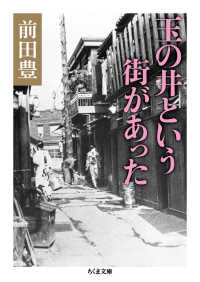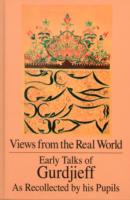- ホーム
- > 洋書
- > 英文書
- > History / World
Full Description
The story of Norfolk and its people began almost a million years ago on the foreshore at Happisburgh. It has a history stretching back into the dimmest mists of time, across whose soil some of our most celebrated national fi gures have walked - from Boudica, to Mary Tudor and Elizabeth, Nelson and Turnip Townshend, Elizabeth Fry and Edith Cavell. Everywhere bears the imprint of that past and every chapter in its history is fascinating. It is a county of great houses, of sweeping parks
and large estates, but there are many smaller and no less attractive manor houses and Georgian rectories, often circled by moats or set in intimate parklands of their own. It is a county of small, twisting roads, of lost railways and of reedy waterways plied by pleasure boats. Norfolk has several hundred small villages set amid a scatter of often beautiful and always historically rich market towns. At the centre is Norwich, one of the great historic cities of Europe, with a remarkable heritage of medieval churches, monastic buildings, cathedrals, a great castle, and a glorious assemblage of domestic and commercial architecture. Historian Chris Barringer lost his heart to Norfolk when he moved there in 1966. He became passionate about its landscapes and its extraordinarily rich history, and A History of Norfolk brings together half a lifetime's experience of walking the fields, exploring the towns and villages, researching a treasury of archives, and absorbing the unique magic of this wonderful county.
Contents
Foreword ix
Preface xi
Introduction 1
The setting 2
The human story 6
The early settlement of Norfolk 11
The Palaeolithic (Old Stone Age) 12
The Mesolithic (Middle Stone Age) 15
The Neolithic (New Stone Age) 16
The Bronze and Iron Ages in Norfolk 23
The Iron Age 26
Roman Norfolk 35
The Roman conquest and its background 35
Material evidence of the Roman presence in Norfolk 37
The road network and the countryside 39
Caistor by Norwich and other towns 43
Forts 47
Norfolk under the Anglo Saxons and Vikings 51
Place-names as a guide to settlement 59
The local Church, 500 to 1066 60
The Viking period 64
Towns in Norfolk 65
A summary of Dark Age Norfolk 69
The Norman Conquest and its aftermath 70
Norwich: the new capital of East Anglia 77
The other towns of post-Conquest Norfolk 85
The Norman Church in Norfolk 97
Early medieval Norfolk 105
Breckland 111
The Fens 114
The Broads 116
Woodland 117
The Black Death (1349) 118
The towns between 1150 and 1350 120
Wool, sheep and textiles 133
The evolution of Norwich stuffs 141
Churches and parishes 145
From Black Death to Reformation 165
The land, 1330 to 1550 166
The Rising of 1381 in Norfolk 168
Monastic houses as landowners 170
Some major families 172
Boroughs, markets and guilds 178
The lives of the `middling sort' 182
The Dissolution 184
Kett's Rebellion of 1549 187
The Fens 191
The new farming 201
Norfolk from 1550 to 1750 205
Faith and belief 207
The impact of the Dissolution 212
The views of visitors 216
The social structure of the county 219
The land 222
New estates and new farming 223
The yeomen 228
Matters of faith: challenge and dissent 229
The Civil Wars and Commonwealth 231
The Nonconformist churches 234
The survival of Catholicism 236
Schools 238
The poor 240
Architecture and buildings 244
Francis Blomefield (1705-1752) 248
Norfolk from 1750 to 1830 249
Parliamentary enclosure 254
Church and chapel 260
Social issues and rural discontent 264
Rivers and roads 267
Changing towns 272
The Broads 289
The impact of man in Broadland 291
Early tourism 294
The grazing marshes and coastal protection 296
Conservation and management 298
Commerce and tourism 301
Vernacular architecture in Norfolk 303
Stylistic changes 317
Estate maps 318
Farm buildings 318
The towns 321
Three case studies 325
Conclusion 327
Norfolk from 1830 to 1914 329
Churches, chapels and schools 330
The New Poor Law 336
Social change 340
The towns 344
`Poppyland' and the Railway Coast 363
The great estates 371
The nineteenth century in Norfolk: a summary 375
Norfolk from 1914 to 1945 377
The First World War 378
The county between the wars 380
Norwich and the towns 385
The Second World War 391
After the Two Wars 397
Movement 399
Social provision 403
Changing agriculture 405
Building conservation 408
Nature conservation 412
The towns 414
Conclusion 430
Conclusion 433
Agricultural terms used in Norfolk 435
References 436
Index 445







